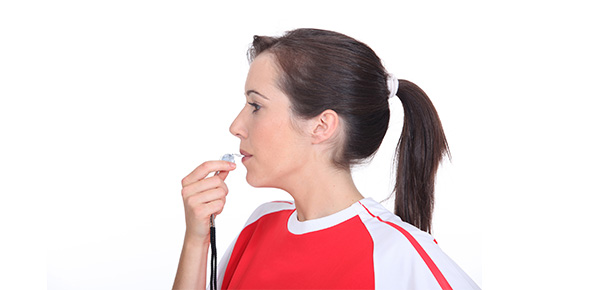Related Flashcards
Related Topics
Cards In This Set
| Front | Back |
 Kohlberg's Moral Stages of Development |
 Kohlberg - Social and moral development |
 Piaget |
 Defense Mechanisms |
 PSYCHOANALYTIC THEORIESBiological factors drive development / Individual strives to channel and control these drives / Personality characteristics appear in childhood / Characteristics are stable over timeSigmund FreudCarl JungAlfred Adler Harry Stack SullivanHeinz HartmannKaren HorneyErik EriksonArthur Chickering |
 Sigmund Freud Unconscious/Conscious/Preconscious;Psychosexual Stages – oral, anal, phallic, latency, genital;Id/Ego/Superego;Defense Mechanisms |
 Carl JungAnalytical psychology;Logos vs. Eros;Individuation/Personal Growth/Self-Actualization;Archetypes – anima, female / animus, male / shadow, unconscious opposite of one’s conscious expression / persona, mask worn or role presented to hide one’s true selfWord-association technique; Intro/Extroversion conceptMyers-Briggs Personality Inventory using bipolar scales based on Jung’s work |
 Alfred Adler Individual Psychology“Father of the Inferiority Complex”Birth order is significantEarly recollections = key to understanding an individual’s style of lifeFictions = perceptions that guide child’s behaviorsPampered or neglected? = negative effect later in lifeNeed to take risks without knowing the outcome |
 Harry Stack SullivanPsychiatry of Interpersonal RelationshipsStressed Dynamism (power of self) which is affected by outside expectationsPath to overcome sense of helplessnessPersonifications (good me/bad me)3 Modes of Ego Formation: 1. Protaxic (in infancy – no concept of time/place) 2. Parataxic (early childhood – child accepts without questioning and reacts unrealistically)3. Syntaxic (later childhood – child evaluates thoughts and feeling san dlearns about relationship patterns in society. 6 Stages of Development: Infancy, Childhood, Juvenile, Preadolescence, Early Adolescence, Late Adolescence |
 Heinz HartmannLogical and abstract mode of thoughtEgo Psychology – Ego is present at birth and doesn’t evolve from the IdEgo functioning (not id impulses) are his theoretical focusInstinctual drives alone cannot guarantee survival – ego adapts to an average expectable environment |
 Karen Horney“Basic Tenants” – innate capacity and desire toward positive growth“Basic Anxiety” – focused on neurosis stemming from apprehension and insecurity caused by being raised by neurotic parentsCoping strategies – when basic anxiety not removed, maladaptive coping happens as a result of not having sufficient trust, love and security during upbringing“Tyranny of the Shoulds” – relentless inner demand to aim toward self-realization*She was the 1st feminist-based criticism of Freud’s theory* |
 Erik EriksonEgo Identity – balance of what “one feels one is and what others take one to be”Ego works toward being autonomous and uniqueWe are not prisoners of our past“Identity Crisis” – happens when an adolescent is unable to integrate all previous roles into a single self-conceptEpigenetic Principle – each strength has its own period of particular importanceMaturation theory – developmental order or unfolding of behavior is hereditaryIndividuals must face and resolve a particular task, crisis or conflict at each level; psycho-social crisis results in a turning pointTotal success or failure is not necessary; an individual will have a tendency toward one alternative or the other8 Psychosocial Stages |
 Arthur ChickeringObserved college students and established 7 dimensions (vectors) that they go through during Erikson’s identity stage.7 vectors: Achieving CompetencyManaging EmotionsBecoming AutonomousEstablishing IdentityFreeing Interpersonal relationshipsClarifying PurposeDeveloping Integrity |
 Erikson's stages |
 MODE - the most commonly occurring valueex: 6 people with ages 21, 22, 21, 23, 19, 21 - mode = 21 |
 Median• the center value• the formula is (N+1)/ 2ex: 6 people with ages 21, 22, 24, 23, 19, 21line them up in order form lowest to highest19, 21, 21, 22, 23, 24and take the center value - mode =21.5 |
 Mean• the mathematical average• the formula is 3X/Nex: mean age = age of person one + age of person two + age of person three, etc./number ofpeople |
 Variance• a measure of how spread out a distribution is• it is computed as the average squared deviation of each number from its mean |
 Standard Deviation• how much scores deviate from the mean• it is the square root of the variance• it is the most commonly used measure of spread |
 DIFFERENCES OF GROUPSChi Square• compares observed frequencies to expected frequenciesex: Is the distribution of sex and voting behavior due to chance or is there a differencebetween the sexes on voting behavior?t-Test• looks at differences between two groups on some variable of interest• the IV must have only two groups (male/female, undergrad/grad)ex: Do males and females differ in the amount of hours they spend shopping in a givenmonth?ANOVA• tests the significance of group differences between two or more groups• the IV has two or more categories• only determines that there is a difference between groups, but doesn’t tell which isdifferentex: Do SAT scores differ for low-, middle-, and high-income students?ANCOVA• same as ANOVA, but adds control of one or more covariates that may influence the DVex: Do SAT scores differ for low-, middle-, and high-income students after controlling forsingle/dual parenting?MANOVA• same as ANOVA, but you can study two or more related DVs while controlling for thecorrelation between the DV• if the DVs are not correlated, then separate ANOVAs are appropriateex: Does ethnicity affect reading achievement, math achievement, and overall scholasticachievement among 6th graders?MANCOVA• same as MANOVA, but adds control of one or more covariates that may influence theDVex: Does ethnicity affect reading achievement, math achievement, and overall scholasticachievement among 6th graders after controlling for social class? |
 RELATIONSHIPS:Correlation• used with two variables to determine a relationship/association• do two variables covary?• does not distinguish between independent and dependent variablesex: Amount of damage to a house on fire and number of firefighters at the fireMultiple Regression• used with several independent variables and one dependent variable• used for prediction• it identifies the best set of predictor variables• you can enter many IVs and it tells you which are best predictors by looking at all of themat the same time• in sequential regression the computer adds the variables one at a time based on theamount of variance they account forex: IVs drug use, alcohol use, child abuseDV. suicidal tendenciesPath Analysis• looks at direct and indirect effects of predictor variables• used for relationships/causalityex: Child abuse causes drug use which leads to suicidal tendencies.Group MembershipLogistic Regression• like multiple regression, but the DV is a dichotomous variable• logistic regression estimates the odds probability of the DV occurring as the values of theIVs changeex: What are the odds of a suicide occurring at various levels of alcohol use? |
 PARAMETRIC TESTSParametric tests are based on assumptions about the distribution of the underlying population from which the sample was taken. The most common parametric assumption is that data are approximately normally distributed. |








